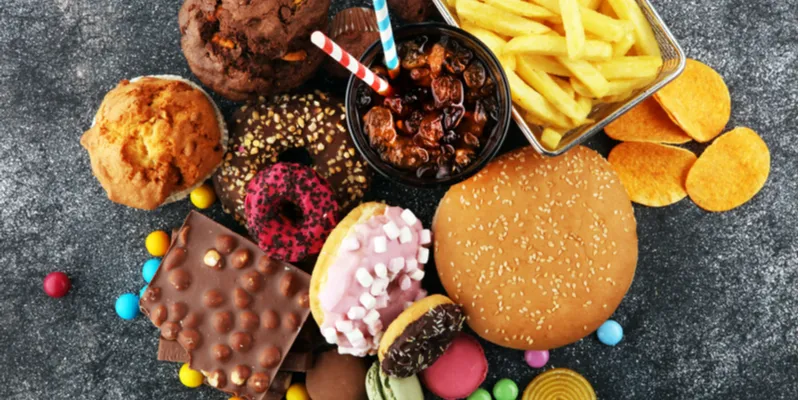Small steps to great progress: Here are the best ways to change your eating habits during the pandemic
If you want to change your eating habits during the pandemic, don’t begin by eliminating all your favourite foods at once. Begin with small steps and tiny changes to make giant leaps of progress towards good health, says our nutritionist
Socrates said that “the secret of change is to focus all of your energy, not on fighting the old, but on building the new.” Compliance is a big factor when it comes to making healthy choices.

Make small changes in your diet like adding healthy food to each meal
When it comes to change, I often ask my clients how they want to approach it. More often than not, I hear them deciding to make massive changes in their diet, from that very day onwards.
Over time though, those changes turn into frustration and eventually they throw all the changes out of the window. This is not how you should embrace any change.
The best thing that you can do for yourself is to take baby steps, one step at a time, without putting too much pressure on yourself. Suddenly, you will find that you have come a long way and you feel great!
Taking baby steps towards great change
Fad diets are here to stay Sometimes, the greatest fad diet is to eat every two hours but this is soon replaced by another diet like intermittent fasting. Which diet should you follow?
The main thing you need to remember is that a diet should create a feasible lifestyle change in the long run. Any diet that is very challenging to follow is not going to stand the test of time.
If you have grown up eating local south Indian foods, drinking green smoothies every day is probably not going to work, no matter how healthy these foods are. You need to bring about healthier changes within the frameworks of what you are used to eating.
Here are some ways you can change your eating habits over time…
Modify your breakfast
If you struggle with cravings and adapting to any change that seems healthy, it’s probably because you have blood sugar imbalance. In that case, you might need to eat a hearty breakfast to avoid stressing your body.
While something like intermittent fasting may work to improve blood sugar and insulin response over time, it might not be the best place to start. Begin with regular healthy and balanced meals early in the day so that you do not experience blood sugar swings and cravings.
Choose healthy desserts
The next step you need to take is not to avoid treats. I often see clients who suddenly want to give up everything, and then they are silently eating sugar candies at night.

Use honey instead of sugar in your beverages
The best approach is to replace refined white sugar sweets with some healthier desserts made with raw jaggery, honey or coconut sugar. See that they are treats with some healthy fats like ghee, and with some proteins like nuts and seeds.
When you have access to these healthy treats, you will not feel a sudden sense of deprivation which then leads to frustration. Replace store bought ice creams with dairy free and refined sugar free ones.
Use smaller plates for balanced meals
Another great way to eat healthier meals is to choose a balanced diet with healthy fats, excellent proteins and lots of fibre, and served on smaller plates.
Two things happen here. The smaller plates will make your mind feel that you have eaten a full meal. Having enough healthy fats and proteins will ensure satiety, preventing frequent hunger and blood sugar swings. Often people go from usual meals to perceived healthy meals like boiled vegetables and clear soup, which do nothing for satiety and only cause blood sugar imbalance, irritation and anger.
Add one coloured fruit or vegetable

Coloured vegetables and fruit can transform your health
Another small change you can make is by adding one different coloured fruit or vegetable to your meals each week. This is my mantra to all my clients.
If you begin just by looking at the list of all the vegetables and fruits that you eat regularly, you will be surprised by how small that list is! Try to add something from each colour of the rainbow every week. Getting out of a food rut is the best way to get healthier.
Another way to do this is to add one or two vegetables to go with every meal that you eat. This will add satiety, improve blood sugar balance and take you slowly towards much better health.
Do a food swap
Do a food swap every week, or even every day. What I mean by that, is to simply replace an unhealthy food item with a healthier option.

Replace unhealthy foods with healthy options
Replace French fries with baked sweet potatoes. Or try eating brown rice instead of white rice. While white rice is not bad at all, provided you eat it as a balanced meal. If you suffer from severe blood sugar fluctuations or strong cravings, brown rice would help in creating a better blood sugar response.
Try replacing every processed food with a whole food. Instead of the healthiest granola bar, which is still processed, snack on a handful of different nuts, seeds and dried fruit.
Drink a lot of water
Water is a wonder! Find yourself a beautiful looking water bottle that is made of stainless steel or glass. See that you drink a whole bottle between each meal – from breakfast to a snack at 11am, snack to lunch, lunch to a snack at 4pm and from the snack to dinner.

Drink water through the day to allow for absorption
Doing this will ensure that you are hydrated and not thirsty all day. Thirst is a sign that your body is dehydrated already. It will also make you gulp down copious amounts of water in the evening, which will impact your sleep. Drinking water slowly throughout the day, will allow you to actually absorb water.
Begin with these few simple changes over the next month, and you’ll be surprised at how much further you are on your journey towards good health.
It will also ensure that you do not quit any of your good resolutions to get healthier.
Edited by Asha Chowdary
(Disclaimer: The views and opinions expressed in this article are those of the author and do not necessarily reflect the views of YourStory.)









